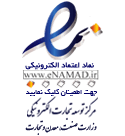ABSTRACT
Background and Objectives: Vitamin D is an essential secosteroid that plays a crucial role in the homeostasis of a few mineral elements, particularly calcium. Since vitamin D deficiency and thyroid diseases are two important global health problems, we aimed to investigate a possible relationship of vitamin D and calcium levels with hypothyroidism in an Iranian population.
Methods: This case-control study was conducted on 175 subjects with hypothyroidism (75 males and 100 females) and 175 euthyroid controls (85 males and 90 females) who were referred to a laboratory in Gorgan, Iran. Serum levels of 25-hydroxyvitamin D, calcium, thyroid-stimulating hormone (TSH), free triiodothyronine (free T3) and thyroxine (total T4) were measured in all participants.
Results: Vitamin D and calcium were significantly lower in patients with hypothyroidism (P<0.0001). Free T3 and calcium levels differed significantly among hypothyroid patients based on their vitamin D status (P<0.0001), but vitamin D levels were within sufficient range in all groups. Moreover, there was a positive correlation between free T3 with vitamin D (r= 0.337, P<0.0001) and calcium (r= 0.361, P<0.0001) levels.
Conclusions: Our results suggest that there may be a relationship between decreased vitamin D levels and thyroid function parameters.
Keywords: Vitamin D Deficiency, Hypocalcemia, Hypothyroidism, Thyrotropin, Thyroxine.




